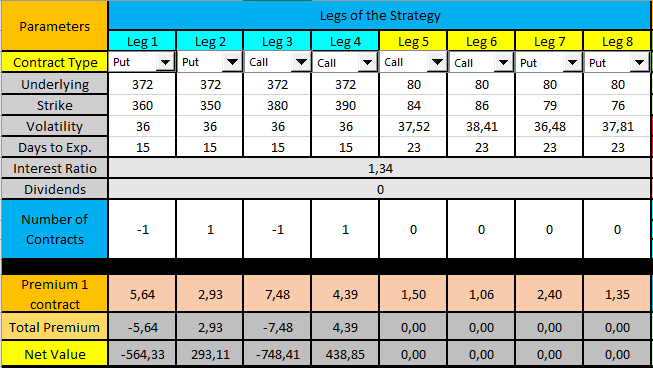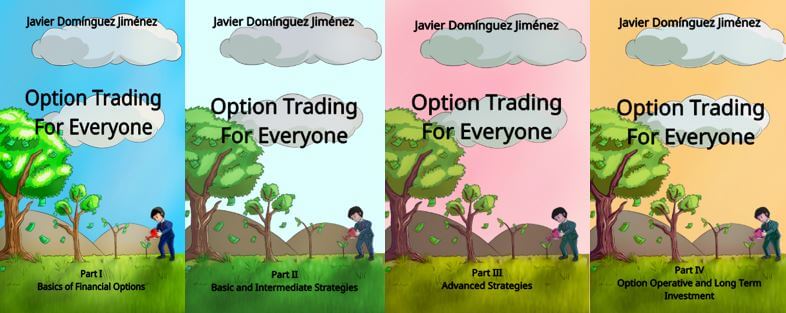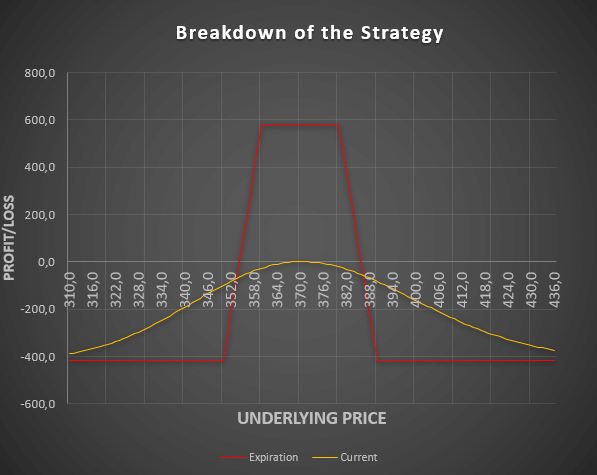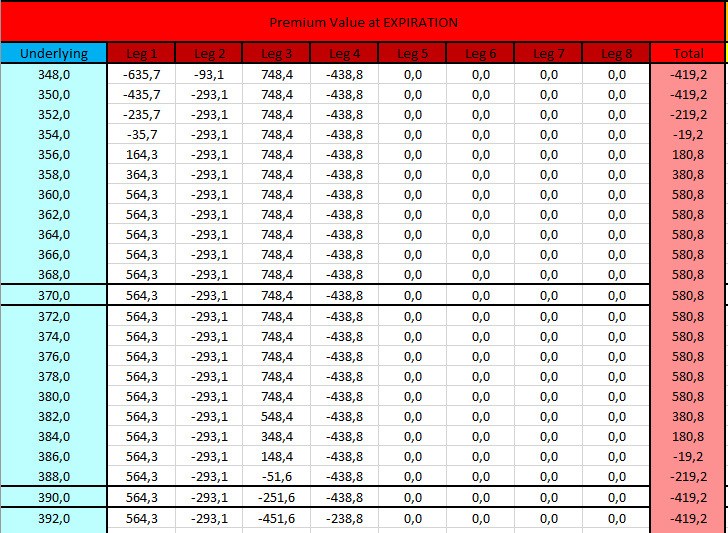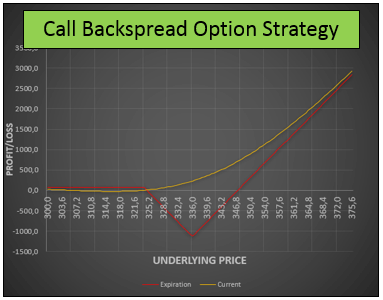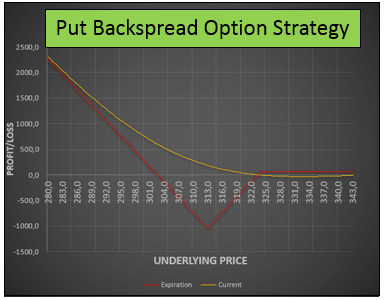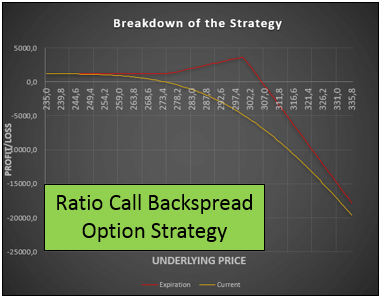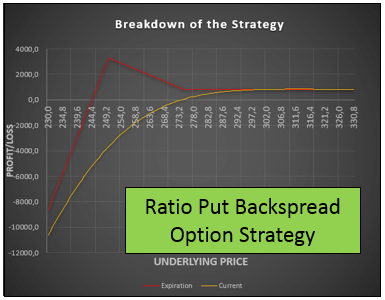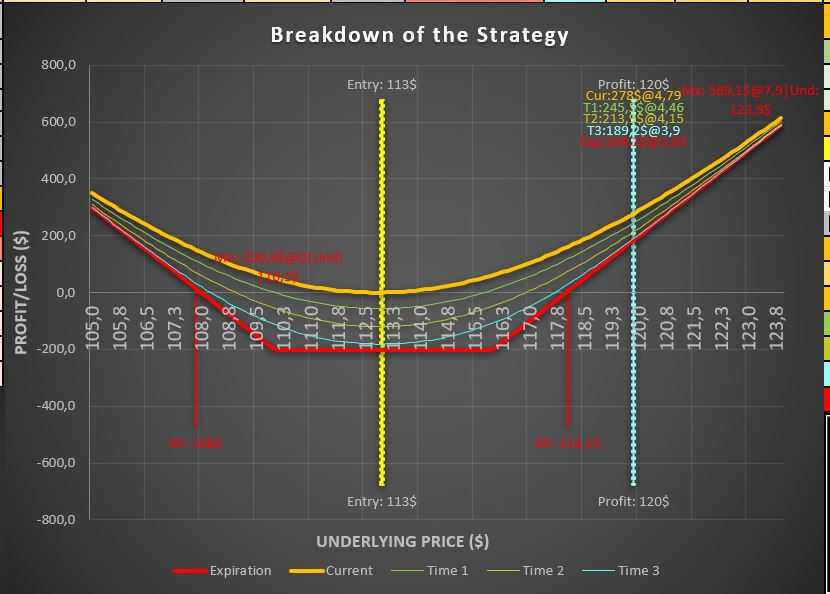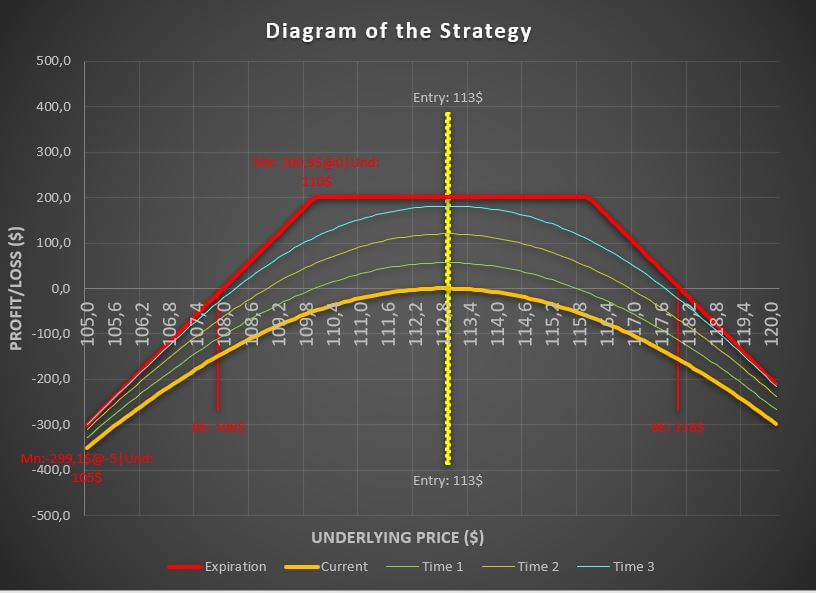Iron Condor Option Strategy – The Highest Risk/Reward Selling Option Strategy
The Iron condor option strategy is surely one of the most useful and safest of all option trading strategies.
Unlike the strangle or the straddle, the iron condor strategy only has one way to perform, and it is a selling biased option strategy.
In this guide, we are going to take a look at what is an iron condor option, we will perform an example of how to use it, and we will learn the iron condor risks and how to manage it.
Table of Contents
What is the Iron Condor option strategy?
The Iron Condor options strategy is a combination of the two existing credit spreads strategies.
At its core, the Iron Condor option is a neutral biased technique that will allow us to take profits from the lack of movement over a certain asset.
When to use Iron Condor option strategy?
We should be using an Iron Condor whenever we believe the market is going to stay flat over a period of time.
It is a step forward to the strangle and the straddle strategies because the Iron Condor risks are much lower compared to those two strategies, as we will learn later.
How Iron Condor works?
To truly understand how an Iron Condor works, we should focus on how does a credit spread work.
For example, when we open a bear call credit spread, we are receiving some money because we are saying that the stock price is not going to rise above the selling leg of the spread.
In these cases, if the market price stays under the shorted strike price of our spread, we will keep the premium and make a profit. However, if we decided to open, at the same time, a bull put credit spread, we would be making another profit if the underlying does not fall below the selling leg of that spread.
We have created a neutral zone in which we will keep the profit from both credit spreads if the underlying ends up between the strike prices of the selling legs of those spreads.
Do you need a Calculator that helps you create and analyze any option strategy in record time? |
Why use Iron Condor option strategy?
We may have two reasons to do so:
- We believe the the underlying is going to stay flat or between certain thresholds for some time. In these cases, we will open an Iron Condor option such as we would open a short strangle or a short straddle, to profit from this scenario. With the Iron Condor option strategy, we are reducing the risk because we are covering ourselves with the legs of the bought strikes of the credit spreads.
- For those cases in which we may have a credit spread opened and the underlying is moving against our trade. In these cases, opening another credit spread in the opposite direction to create the Iron Condor option strategy will reduce our losses while maintaining the same levels of risks.
Though the Iron Condor management, we may be able to reduce the risk of other strategies too if things do not perform as we expected.
Let us take a look at an Iron Condor example to understand how does it work better
Iron Condor option strategy example
Let us suppose we want to trade an Iron Condor option strategy over the company Costco Wholesales because we believe the stock price is going to stay quite flat for the following two weeks.
The first thing we have to do is to determine the limits in which we believe the stock price is going to stay because those two thresholds are going to be the short legs of our spreads.
To do so, we can use different technical indicators such as the Keltner Channels or the Bollinger Bands, which may be very useful in this situation.
The stock price is at $372 today, and we believe the stock price is going to stay between $380 and $360. In this case, these two are going to be the prices of our selling strikes. Let us take a look at the calculator to identify how much premiums are we going to obtain if we decide to open these trades when the volatility is about 36%.
As you can see in our calculator in the image above, if we decide to open an Iron Condor, it is the equivalent to open two credit spreads.
- The first one, the bull put credit spread, is formed by the sold $360 strike price and the bought $350 strike price, in a net income of $2.71.
- The second one, the bear call credit spread, is formed by the sold $380 strike price and the bought $390 strike price, with a net income of $3.10.
In other words, for every Iron Condor option strategy we decide to open, we will receive a total income of $5.81.
In every case, we are taking 15 days to expiration. Now, the easiest thing to understand how our Iron Condor management is to show the graph with the strike prices of the strategy. Let us set all the important points in the chart provided by ProRealTime charting software.
Breaking down the Iron Condor option strategy
In the graph, we can see many different parameters, so we will define every one of them.
At the bottom of the chart, we can see two orange lines that represent the strike prices of the bull put credit spread.
In the upper part of the chart, the strike prices of the bearish call credit spread are marked in green.
Every time we open an Iron Condor option strategy, we receive a credit for it. To determine where is the threshold in which we will begin to lose money, we must subtract the premium received to the selling leg of both spreads. The red dotted line represents the threshold at which we will begin to lose money.
To make things easier to comprehend, the red areas of the chart determines the Iron Condor risks, while the green area is the zone in which we will keep profits.
However, unlike the straddle or the strangle, the Iron Condor option strategy risk is completely limited by the differences between the strikes of our spreads.
The difference in strike prices in the put credit spread is $10, so our limit to the downside is $10 minus the premium received ($5.81). And it will happen exactly the same to the other side.
Iron Condor option strategy payoff diagram
To completely understand our trade, we must identify the performance with our Iron Condor profit calculator. To do so, we will take our option strategy calculator to help us in this task.
As you can see, the Iron Condor option strategy shows us the area in which we will obtain a profit and in the zones in which we will make a loss.
The most exciting thing to remark about this breakdown is that the profit is higher than the maximum possible loss, making the Iron Condor option strategy a very powerful tool to use in the options market.
Iron Condor option strategy margin requirement
As we are dealing with a biased selling strategy, the broker will ask us to have a margin in our account to allow us to open this trade, so we will need to have a margin account to be able to do so. Let us breakdown how to identify the margin requirement of the Iron Condor.
When we open a credit spread, the broker will ask us for a margin to carry on. This margin is calculated by subtracting the strike price of the bought leg minus the strike price of the selling branch and multiplied by one hundred.
Following our example, the bull put credit spread we opened in Costco Wholesales as part of the Iron Condor option strategy had a strike price at $360 and $350. In this case, the difference between strikes is $10, which would cost us a total margin of $1000 to open the trade.
Simultaneously, the bear call credit spread had another difference of $10 between strikes, so the margin would be again $1000.
However, to open our Iron Condor, the broker is only going to us ask us the margin of the spread whose strike price difference is higher. In our case, both spreads have the same distance in price, so to open our Iron Condor, we will only need $1000.
The reason is we cannot lose any more money than the $1000 in either direction.
What happens when an Iron Condor option strategy expires In The Money?
When the underlying price of the asset ends up expiring between the strikes prices of our credit spreads, the most likely thing to happen is that we will be assigned to the shorted leg of the spread.
In these cases, to eliminate the risks associated, we would have to exercise our bought strike to compensate for the debt.
We would make a loss depending on the underlying price and the premium we received for opening the Iron Condor option strategy.
That is something we can only determine by calculating the risks and profits beforehand.
Can you close an Iron Condor early?
We could close our Iron Condor option strategy whenever we want. However, we should take into account that, as we are dealing with a biased selling strategy, we are going to make the best profits when we leave it some time to time decay affect the options.
If we take a look at the Iron Condor payoff diagram, we will see a better profit when the time to the expiration arrives
Last words about the Iron Condor option strategy
Of all of the option strategies, the Iron Condor risk is lower compared to the profits.
As the ratio of risk/reward is the higher, the Iron Condor is a great strategy we could use when we need to reduce risks in a credit spread or when we are sure the market is not going to move.
The power of the Iron Condor option strategy comes from the lack of movement in the market, so we should keep that in mind to make the best of it.
Also, we must be sure that we are opening these strategies with a high volume and open interest.
If you still do not understand very well what is the difference between these two concepts, we recommend you to take a look at this article, in which we explain the diferences between volume and open interest in options.
